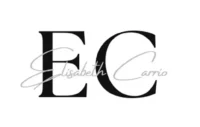Feminine leadership is not just a style, but an approach rooted in listening, intuition, collaboration, and empathy. As a member of the BPW (Business and Professional Women) network, I've observed how these qualities bring a unique dynamic to leadership and problem-solving.
In a world marked by complexity and constant change, female leadership is increasingly recognized as a key driver of success, offering a paradigm shift towards greater inclusivity, innovation and collective growth.
What is female leadership?
Feminine leadership transcends gender. It's not just about women as individuals, but about the archetypal qualities they embody. In this article, I'm not referring to women themselves, but to the archetypes that the feminine represents, which can be found beyond gender. These archetypes, deeply rooted in our collective unconscious, reflect five fundamental aspects of the feminine: the Nurturing Mother, the Creative Maiden, the Wise Woman, the Passionate Lover, and the Courageous Warrior.
The Mother, symbolized by figures such as Mother Earth or Demeter, embodies nurture, growth, and support. Leaders who express this archetype foster development and collective well-being within their teams. The Maiden, represented by Persephone or Artemis, reflects potential, vision, and openness to new possibilities, offering creativity and fresh perspectives. The Wise Woman, such as Hecate or Kali, brings wisdom and transformational ideas, guiding organizations through crucial transitions. The Lover, embodied by Aphrodite or Venus, symbolizes emotional intelligence, creativity, and connection, fostering deep relationships within teams and communities. Finally, the Warrior, exemplified by Athena or Durga, embodies protection, resilience, and the courage to stand up for core values.
Although these archetypes are mythological in origin, they find practical expression in leadership styles that emphasize transformation, adaptability, and connection. Feminine leadership, in this sense, differs from traditional models that often emphasize hierarchy, competition, and control. It incorporates symbolic qualities of creation, intuition, receptivity, transformation, and healing. Leadership rooted in these principles fosters not only inclusion and collaboration, but also sustainable growth and innovation.
Symbolism of the feminine and the masculine
The feminine is often associated with the forces of creation and life, linked to symbols such as the Earth, the Moon, and water. These elements reflect fluidity, cycles, and nurturing energy. The feminine is also deeply connected to intuition and invisible knowledge, symbolized by the waxing moon, the mirror, and the owl. Feminine leadership emphasizes receptivity and balance, similar to the yin in the yin-yang dynamic, in harmony with the assertive energy of the masculine. Transformation and healing are central to the feminine, symbolized by the serpent and the spider's web, highlighting its ability to guide individuals and organizations through cycles of renewal and connection.
In contrast, the masculine archetype emphasizes power, authority, and logic. It is represented by symbols like the sun, sword, and mountain, which convey strength and stability. Masculine energy is associated with action and exploration, favoring outward movement and conquest. Although the masculine embodies protection and foresight, its symbols—like the shield and tree—also reflect stability and nurture. Like the feminine, the masculine also emphasizes transformation, but often through struggle and growth, as symbolized by the phoenix or hammer.
The interaction between these forces is essential for harmony and balance. Traditions such as the concept of yin and yang or the Hindu philosophy of Shiva and Shakti highlight how these energies complement each other. Leadership, too, thrives when it integrates the transformational qualities of the feminine and masculine, blending empathy and action, intuition and logic, collaboration and decisiveness.
The Benefits of Female Leadership in Organizations
Female leadership brings a unique dynamic to organizations. By prioritizing inclusivity and collaboration, it creates environments where diverse perspectives are valued, leading to more innovative solutions. Women leaders excel at conflict resolution, often approaching disagreements with empathy and seeking win-win solutions. They are particularly effective at change management, guiding teams through uncertainty with patience and vision.
Research confirms these observations. Studies show that companies with gender-diverse leadership teams consistently outperform their competitors. According to McKinsey, organizations led by women are 21% more likely to achieve above-average profitability. Harvard Business Review highlights that women leaders often excel in emotional intelligence, a crucial quality for addressing today's complex challenges. By incorporating these qualities, women leaders create workplaces that are not only more equitable, but also more resilient and adaptive.
The challenges facing women leaders
Despite their strengths, women leaders continue to face systemic barriers. Cultural expectations and stereotypes often limit opportunities for advancement, with the "glass ceiling" a persistent obstacle. Women are frequently held to higher standards than their male counterparts, constantly having to prove their competence. Furthermore, balancing professional and personal responsibilities remains a unique challenge, amplified by societal norms.
Overcoming these obstacles requires women to embrace their authenticity and build on their unique strengths. By staying true to their leadership style, rather than conforming to traditional norms, they can navigate these challenges more effectively. Building support networks and seeking mentorship are also essential strategies for fostering growth and resilience. Organizations, meanwhile, have a role to play in creating environments that actively dismantle systemic bias and foster equitable leadership opportunities.
Conclusion
The world is undergoing a profound transformation, and leadership must evolve to meet the challenges of the 21st century. Female leadership represents a paradigm shift toward greater inclusivity, empathy, and transformation. By embracing these qualities, organizations can foster environments where creativity and collaboration thrive, paving the way for sustainable growth.
It's time to reevaluate what leadership means in today's world. Let's move beyond traditional hierarchies and embrace a model that values the transformative power of women. Together, we can create a future where leadership is defined not by gender, but by the qualities that foster collective success.
What is female leadership?
Feminine leadership transcends gender. It's not just about women as individuals, but about the archetypal qualities they embody. In this article, I'm not referring to women themselves, but to the archetypes that the feminine represents, which can be found beyond gender. These archetypes, deeply rooted in our collective unconscious, reflect five fundamental aspects of the feminine: the Nurturing Mother, the Creative Maiden, the Wise Woman, the Passionate Lover, and the Courageous Warrior.
The Mother, symbolized by figures such as Mother Earth or Demeter, embodies nurture, growth, and support. Leaders who express this archetype foster development and collective well-being within their teams. The Maiden, represented by Persephone or Artemis, reflects potential, vision, and openness to new possibilities, offering creativity and fresh perspectives. The Wise Woman, such as Hecate or Kali, brings wisdom and transformational ideas, guiding organizations through crucial transitions. The Lover, embodied by Aphrodite or Venus, symbolizes emotional intelligence, creativity, and connection, fostering deep relationships within teams and communities. Finally, the Warrior, exemplified by Athena or Durga, embodies protection, resilience, and the courage to stand up for core values.
Although these archetypes are mythological in origin, they find practical expression in leadership styles that emphasize transformation, adaptability, and connection. Feminine leadership, in this sense, differs from traditional models that often emphasize hierarchy, competition, and control. It incorporates symbolic qualities of creation, intuition, receptivity, transformation, and healing. Leadership rooted in these principles fosters not only inclusion and collaboration, but also sustainable growth and innovation.
Symbolism of the feminine and the masculine
The feminine is often associated with the forces of creation and life, linked to symbols such as the Earth, the Moon, and water. These elements reflect fluidity, cycles, and nurturing energy. The feminine is also deeply connected to intuition and invisible knowledge, symbolized by the waxing moon, the mirror, and the owl. Feminine leadership emphasizes receptivity and balance, similar to the yin in the yin-yang dynamic, in harmony with the assertive energy of the masculine. Transformation and healing are central to the feminine, symbolized by the serpent and the spider's web, highlighting its ability to guide individuals and organizations through cycles of renewal and connection.
In contrast, the masculine archetype emphasizes power, authority, and logic. It is represented by symbols like the sun, sword, and mountain, which convey strength and stability. Masculine energy is associated with action and exploration, favoring outward movement and conquest. Although the masculine embodies protection and foresight, its symbols—like the shield and tree—also reflect stability and nurture. Like the feminine, the masculine also emphasizes transformation, but often through struggle and growth, as symbolized by the phoenix or hammer.
The interaction between these forces is essential for harmony and balance. Traditions such as the concept of yin and yang or the Hindu philosophy of Shiva and Shakti highlight how these energies complement each other. Leadership, too, thrives when it integrates the transformational qualities of the feminine and masculine, blending empathy and action, intuition and logic, collaboration and decisiveness.
The Benefits of Female Leadership in Organizations
The feminine is often associated with the forces of creation and life, linked to symbols such as the Earth, the Moon, and water. These elements reflect fluidity, cycles, and nurturing energy. The feminine is also deeply connected to intuition and invisible knowledge, symbolized by the waxing moon, the mirror, and the owl. Feminine leadership emphasizes receptivity and balance, similar to the yin in the yin-yang dynamic, in harmony with the assertive energy of the masculine. Transformation and healing are central to the feminine, symbolized by the serpent and the spider's web, highlighting its ability to guide individuals and organizations through cycles of renewal and connection.
Female leadership brings a unique dynamic to organizations. By prioritizing inclusivity and collaboration, it creates environments where diverse perspectives are valued, leading to more innovative solutions. Women leaders excel at conflict resolution, often approaching disagreements with empathy and seeking win-win solutions. They are particularly effective at change management, guiding teams through uncertainty with patience and vision.
Research confirms these observations. Studies show that companies with gender-diverse leadership teams consistently outperform their competitors. According to McKinsey, organizations led by women are 21% more likely to achieve above-average profitability. Harvard Business Review highlights that women leaders often excel in emotional intelligence, a crucial quality for addressing today's complex challenges. By incorporating these qualities, women leaders create workplaces that are not only more equitable, but also more resilient and adaptive.
The Benefits of Female Leadership in Organizations
Female leadership brings a unique dynamic to organizations. By prioritizing inclusivity and collaboration, it creates environments where diverse perspectives are valued, leading to more innovative solutions. Women leaders excel at conflict resolution, often approaching disagreements with empathy and seeking win-win solutions. They are particularly effective at change management, guiding teams through uncertainty with patience and vision.
Research confirms these observations. Studies show that companies with gender-diverse leadership teams consistently outperform their competitors. According to McKinsey, organizations led by women are 21% more likely to achieve above-average profitability. Harvard Business Review highlights that women leaders often excel in emotional intelligence, a crucial quality for addressing today's complex challenges. By incorporating these qualities, women leaders create workplaces that are not only more equitable, but also more resilient and adaptive.
The challenges facing women leaders
Despite their strengths, women leaders continue to face systemic barriers. Cultural expectations and stereotypes often limit opportunities for advancement, with the "glass ceiling" a persistent obstacle. Women are frequently held to higher standards than their male counterparts, constantly having to prove their competence. Furthermore, balancing professional and personal responsibilities remains a unique challenge, amplified by societal norms.
Overcoming these obstacles requires women to embrace their authenticity and build on their unique strengths. By staying true to their leadership style, rather than conforming to traditional norms, they can navigate these challenges more effectively. Building support networks and seeking mentorship are also essential strategies for fostering growth and resilience. Organizations, meanwhile, have a role to play in creating environments that actively dismantle systemic bias and foster equitable leadership opportunities.
Conclusion
The world is undergoing a profound transformation, and leadership must evolve to meet the challenges of the 21st century. Female leadership represents a paradigm shift toward greater inclusivity, empathy, and transformation. By embracing these qualities, organizations can foster environments where creativity and collaboration thrive, paving the way for sustainable growth.
It's time to reevaluate what leadership means in today's world. Let's move beyond traditional hierarchies and embrace a model that values the transformative power of women. Together, we can create a future where leadership is defined not by gender, but by the qualities that foster collective success.



